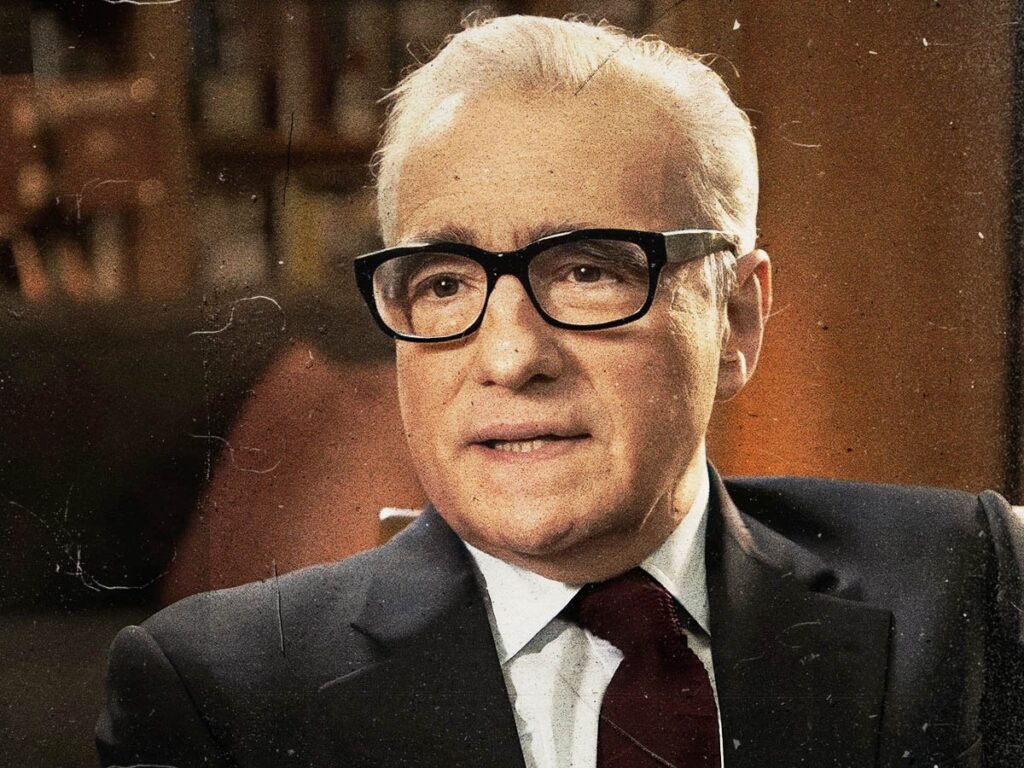
Martin Scorsese, a titan of modern cinema, has long been vocal about his admiration for Alfred Hitchcock, the master of suspense. Scorsese’s love for Hitchcock’s films is no secret, but one particular movie stands out as his favorite. When asked to name the Hitchcock film he’s most obsessed with, Scorsese pointed to Vertigo (1958), a psychological thriller that has enthralled audiences and filmmakers for decades. “It’s a film that I’m obsessed with,” Scorsese has often remarked, reflecting his deep fascination with its themes, visual language, and emotional complexity.
Why Vertigo?
Released in 1958, Vertigo is a psychological drama that tells the story of John “Scottie” Ferguson (James Stewart), a retired detective suffering from acrophobia. Hired to follow a mysterious woman named Madeleine (Kim Novak), Scottie becomes consumed by obsession and guilt, leading to a haunting exploration of identity, love, and loss. While initially met with mixed reviews, Vertigo has since been heralded as one of the greatest films ever made, even topping Sight & Sound’s prestigious poll of the best films of all time in 2012.
Scorsese’s obsession with Vertigo stems from its unparalleled ability to immerse the viewer in a deeply personal and disorienting narrative. For Scorsese, Hitchcock’s ability to translate psychological states into visual storytelling is nothing short of genius. “The film is about obsession, and it makes you feel that obsession,” Scorsese once said in an interview. This focus on psychological intensity aligns closely with Scorsese’s own approach to filmmaking, where characters often grapple with inner demons and moral dilemmas.
Visual Storytelling and the Language of Cinema
One of the most striking aspects of Vertigo is its visual storytelling, a quality that has left a lasting impression on Scorsese. From the iconic dolly zoom that mimics the sensation of vertigo to the lush, dreamlike color palette, Hitchcock uses every cinematic tool at his disposal to create a hypnotic experience. Scorsese has often praised Hitchcock’s meticulous attention to detail, describing Vertigo as “a masterclass in using the camera to tell a story.”
Scorsese’s films share a similar dedication to visual language. In Taxi Driver (1976), for instance, the cinematography captures Travis Bickle’s descent into madness through distorted angles, oppressive lighting, and vivid colors. Much like Hitchcock, Scorsese uses the camera not just to show events but to place viewers inside his characters’ minds.
Hitchcock’s use of recurring motifs, such as spirals symbolizing psychological descent, also resonates with Scorsese. In Raging Bull (1980), for example, the boxing ring becomes a metaphor for Jake LaMotta’s internal struggles. Both directors use visual symbols to deepen the narrative, elevating their films beyond mere storytelling into the realm of art.
Themes of Obsession and Guilt
Another reason Vertigo holds such a powerful sway over Scorsese is its exploration of obsession and guilt—two themes that recur throughout his own work. In Vertigo, Scottie’s fixation on Madeleine consumes him, leading to a tragic cycle of loss and self-destruction. This portrayal of obsession as both seductive and destructive is echoed in many of Scorsese’s characters.
Take The Aviator (2004), where Howard Hughes’ obsession with perfection and control leads to his downfall. Like Scottie, Hughes is trapped by his desires and haunted by his failures. Similarly, The Wolf of Wall Street (2013) portrays Jordan Belfort’s insatiable pursuit of wealth and power, which ultimately costs him his humanity.
Guilt, too, is a defining trait in both directors’ films. Scottie’s inability to save Madeleine is mirrored in characters like Charlie in Mean Streets (1973), who struggles with guilt over his loyalty to a self-destructive friend. For Scorsese, as for Hitchcock, guilt is not merely a plot device but a profound force that shapes his characters’ lives.
The Role of Music in Vertigo and Scorsese’s Films
Hitchcock’s collaboration with composer Bernard Herrmann on Vertigo produced one of the most haunting scores in cinematic history. Herrmann’s music, with its swirling strings and melancholic tones, perfectly captures the film’s dreamlike and obsessive qualities. Scorsese, a director known for his impeccable use of music, has often cited Herrmann’s work as a major influence.
In Scorsese’s films, music serves as more than just background—it becomes a character in its own right. For instance, the use of Gimme Shelter in Goodfellas (1990) and Casino (1995) underscores moments of tension and chaos, much like Herrmann’s score amplifies the emotional resonance of Vertigo. Scorsese’s ability to pair music with visuals to evoke mood and theme can be traced back to Hitchcock’s collaborations with Herrmann.
Influence on Scorsese’s Own Work
Scorsese’s fascination with Vertigo is evident in several of his films, most notably Shutter Island (2010). Like Vertigo, Shutter Island blurs the lines between reality and illusion, drawing viewers into the protagonist’s fractured psyche. Both films explore themes of loss, guilt, and identity, using visual and narrative techniques to create a sense of unease.
The influence of Vertigo can also be seen in Scorsese’s use of color and composition. In The Age of Innocence (1993), the vibrant reds and greens evoke emotional and psychological states, much like the color palette in Vertigo. Similarly, the dreamlike sequences in The Last Temptation of Christ (1988) reflect Hitchcock’s ability to make the surreal feel tangible.
Shared Obsession with Craft
One of the reasons Scorsese connects so deeply with Vertigo is his shared obsession with the craft of filmmaking. Both directors are meticulous in their approach, pushing the boundaries of the medium to tell stories that resonate on both intellectual and emotional levels. For Hitchcock, this meant inventing new techniques like the dolly zoom; for Scorsese, it means employing groundbreaking visual effects and editing styles.
Their shared obsession extends to their characters. Both Hitchcock and Scorsese are drawn to flawed, complex individuals whose struggles mirror larger existential questions. Whether it’s Scottie in Vertigo or Travis in Taxi Driver, their characters are conduits for exploring the human condition.
Why Vertigo Endures
For Scorsese, Vertigo is not just a film—it’s a touchstone for what cinema can achieve. Its ability to immerse viewers in a deeply personal and haunting narrative continues to inspire him. “It’s a film that stays with you,” Scorsese has said, emphasizing its lasting impact on his own approach to storytelling.
The enduring appeal of Vertigo lies in its universality. While it’s a deeply specific story about one man’s obsession, its themes of love, loss, and identity resonate across cultures and generations. For Scorsese, it’s a reminder of the power of cinema to explore the most profound aspects of human experience.
Scorsese’s Homage to Hitchcock
Martin Scorsese’s obsession with Vertigo is a testament to the film’s unparalleled artistry and emotional depth. For a filmmaker as accomplished as Scorsese to cite it as a major influence speaks volumes about its impact. From its visual storytelling to its exploration of obsession and guilt, Vertigo has shaped Scorsese’s own cinematic language, inspiring some of his most iconic works.
As Scorsese continues to push the boundaries of filmmaking, his reverence for Hitchcock’s masterpiece reminds us of the timeless power of cinema to captivate, challenge, and move us. For both directors, film is not just entertainment—it’s an art form capable of revealing the deepest truths of the human soul.
No comments yet.








